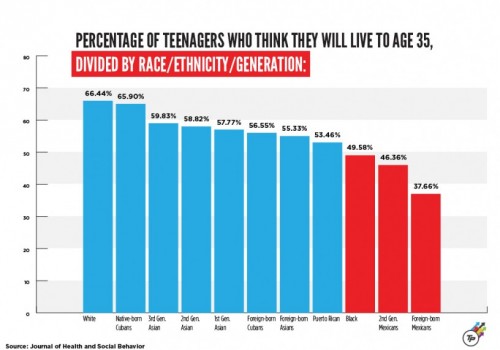I recently moved to a neighborhood that people routinely describe as “bad.” It’s my first time living in such a place. I’ve lived in working class neighborhoods, but never poor ones. I’ve been lucky.
This neighborhood — one, to be clear, that I had the privilege to choose to live in — is genuinely dangerous. There have been 42 shootings within one mile of my house in the last year. Often in broad daylight. Once the murderers fled down my street, careening by my front door in an SUV. One week there were six rapes by strangers — in the street and after home invasions — in seven days. People are robbed, which makes sense to me because people have to eat, but with a level of violence that I find confusing. An 11-year-old was recently arrested for pulling a gun on someone. A man was beaten until he was a quadriplegic. One day 16 people were shot in a park nearby after a parade.
I’ve lived here for a short time and — being white, middle-aged, middle class, and female — I am on the margins of the violence in my streets, and yet I have never been so constantly and excruciatingly aware of my mortality. I feel less of a hold on life itself. It feels so much more fragile, like it could be taken away from me at any time. I am acutely aware that my skin is but paper, my bones brittle, my skull just a shell ripe for bashing. I imagine a bullet sheering through me like I am nothing. That robustness that life used to have, the feeling that it is resilient and that I can count on it to be there for me, that feeling is going away.
So, when I saw the results of a new study showing that only 50% of African American teenagers believe that they will reach 35 years of age, I understood better than I have understood before. Just a tiny — a teeny, teeny, tiny — bit better.
I have heard this idea before. A friend who grew up the child of Mexican immigrants in a sketchy urban neighborhood told me that he, as a teenager, didn’t believe he’d make it to 18. I nodded my head and thought “wow,”‘ but I did not understand even a little bit. He would be between the first and second column from the right: 54% of 2nd generation Mexican immigrants expect that they may very well die before 35. I understand him now a tiny — a teeny, teeny tiny — bit better.
Sociologists Tara Warner and Raymond Swisher, the authors of the study, make clear that the consequences of this fatalism are far reaching. If a child does not believe that they might live to see another day, what motivation can there possibly be for investing in the future, for caring for one’s body, for avoiding harmful habits or dangerous activities? Why study? Why bother to see a doctor? Why not do drugs? Why avoid breaking the law?
Why wouldn’t a person put their future at risk — indeed, their very life — if they do not believe in that future, that life, at all?
If we really want to improve the lives of the most vulnerable people in our country, we cannot allow them to live in neighborhoods where desperation is so high that people turn to violence. Dangerous environments breed fatalism, rationally so. And once our children have given up on their own futures, no teachers’ encouragement, no promise that things will get better if they are good, no “up by your bootstraps” rhetoric will make a difference. They think they’re going to be dead, literally.
We need to boost these families with generous economic help, real opportunities, and investment in neighborhood infrastructure and schools. I think we don’t because the people with the power to do so don’t understand — even a teeny, teeny tiny bit — what it feels like to grow up thinking you’ll never grow up. Until they do, and until we decide that this is a form of cruelty that we cannot tolerate, I am sad to say that I feel pretty fatalistic about these children’s futures, too.
Re-posted at Pacific Standard.
Lisa Wade, PhD is an Associate Professor at Tulane University. She is the author of American Hookup, a book about college sexual culture; a textbook about gender; and a forthcoming introductory text: Terrible Magnificent Sociology. You can follow her on Twitter and Instagram.

Comments 2
1 — December 7, 2015
I live in Baltimore and routinely hear of neighbors being assaulted and robbed, frequently by middle or high school kids. The assaults can be vicious; one man was beaten unconscious.
Anon — January 6, 2016
Umm...maybe. I notice that 1/3 of white teenagers don't think they'll live to 35, either, when statistically we know that's not the case. Maybe teenagers are nihilistic, and thus more fatalistic? And 35 also seems pretty far away to them. I was kind of a live fast, die young kind of edgy teen myself, but by the time I was 25 that attitude was long gone. I don't doubt that people living in more violent neighborhoods, who are more likely to be nonwhite, do think they will die younger and are more likely to do so. But probably a better population to pose this question to is people in their early-mid twenties.